Information/Write-up
Rock'n'roll. There was a time when those two words were exclusive of each other, when they didn't run together to form what they do.
But rock'n'roll had no formal beginning, just as it won't have a definitive end. It lives and dies, a story written and rewritten all over the world, each generation carving its own definition.
Some of those stories never fade away, of course, and many more are best left unremembered. But none has ever spun its orbit over these parts like the saga of TEENAGE HEAD. Not before, and not since.
Riots,car crashes, hit records, breakup and brushes with the law. Failing friendships, bad deals, ass-kicking live shows -- And revival. As genuine a rock'n'roll story as any of the best.
The names haven't been changed here, because no one is innocent.
It all starts with a riff, they say, but for the principals of TEENAGE HEAD, it was actually a rift -- a choreographed one.
Gord Lewis and Frank Kerr met in Grade 9 phys-ed class at Westdale Secondary School. The skinniest kids of the lot, they were paired together for wrestling.
It made them.
"Frank and I worked out all the moves before, so that both of uswould pass," says Lewis. That's all it took, really. Guitarist Lewis had the name TEENAGE HEAD kicking around in his own head before there was ever a band. He just liked it. Kerr was the perfect frontman -- a comic and clown with a great voice, a stage diver long before it became chic.
"I think Gord and I were the only guys at Westdale hand-sewing our bell-bottoms into straight-leg," says Kerr. "And we all had similar band pictures stuck up in our lockers."
Rounding out the lineup were fellow Westdale students, bassit Stephen Mahon and drummer Nick Stipanitz, the latter drafted into the band after watching Kerr break his wrist on the skins during a practice at the Kerr family home.
"We didn't have a singer then," says Kerr. "So I grabbed the mike and started rolling around."
The boys practiced Saturday mornings at the Kerr residence two years straight before ever playing out.
"We wanted to make sure we were good," say Kerr, "and that was the difference when we went to Toronto. The other bands just couldn't play."
He relates a funny story about those early practice days. Seems there was a curmudgeon neighbour on Kerr's street who would call the police each Saturday and complain about the noise.
"Each Saturday, this same cop would come, tell us he was responding to a complaint, and he'd say, 'Keep it up. You guys are getting better'," says Kerr. "He'd stay for a couple of songs. God, I wish I knew who he was."
The first live show was in the Westdale cafeteria.
"It was great. We had the nerve to get up and do it and no one else did," Lewis told a reporter years later. "Yeah, they really liked us."
It was the early '70's and, as always, very cool to be in a band. Kerr, born in Scotland in 1956, became Frankie Venom. The boys were labeled a punk band, lumped in with Toronto's Viletones and The Diodes.
TEENAGE HEAD wasn't really a punk band, but they were more than willing to take the exposure that came with the label.
"Punk rock is associated with no talent -- it's appearance and actions, not music," Mahon told The Spectator in December 1977, the band's first mention in the local press. "You could be blind and still enjoy us."
By then the Head was out of school, touring the bar circuit and building a reputation. They made hay on the burgeoning Toronto punk scene, and forayed in Boston and New York for gigs.
Indeed, Toronto was a major player on the international punk circuit, which Lewis saw as London, Toronto, and New York.
"Everyone knew we were from Hamiliton definitely," he says. "A lot of the scene there (Toronto) came from the art school, and we would trudge in with all our punks from Hamilton. There was trouble sometimes."
In the summer of 1978, TEENAGE HEAD released its first single, a 45 with Picture My Face backed with You're Tearin' Me Apart.
Less than a year later -- almost exactly 20 years ago -- the Head had its first full-length album, a self-titled disc on Epic Records.
TEENAGE HEAD had been trying hard to shed its punk-like persona, and with some success. Critics came up with a more apt descriptions of the band's sound -- urban rockabilly, chunky rock'n'roll, tough and tight.
Another recurring comment in the reviews was that TEENAGE HEAD wore its audiences out.
The music sounded both familiar and fresh, and remains that way to this day. But even though the songs on the first LP were terrific, with the buzzsaw summer song Top Down leading the charge, there was almost universal hated of the disc.
"Are we pleased with the album? ... You'd have to be deaf to be pleased with the album," Venom said in an August 1979 interview.
The problem was the production -- it was shallow, the mix was muddy, and the drums sound like someone pounding away on a shoe box.
But the songs, all originals, were great.
"We weren't paying attention to any trends or style. We just played the stuff we liked," said Lewis.
The band was the lone survivor of that hot, halting Toronto punk scene, and were now turning some serious heads.
"The Hamilton band doesn't play rock'n'roll, they are rock'n'roll." --Toronto Sun writer Jonathan Gross, June 1980, in a review of the Ontario Place concert.
--------------------------------------------------------------------------------
Part Two: The Riot
At about 4 p.m. on a Monday, June 2, 1980, Gord Lewis hopped on a subway and headed down to the Forum at Ontario Place where eenage Head was to play the biggest and most important gig of their short career. There were to be American record company wags present.
It was sound check time, but Lewis could sense something in the air.
"The show wasn't for hours, but I noticed there were already people sitting in the stands, which was weird."
The Forum was an open-air, concert-in-the-round venue that could hold about 13, 000 people, and there were that many and more by showtime.
Toronto's Bob Segarini was also on the bill, but the fans hadn't come to see Bob Segarini. Event officials decided to close the park gates when the venue was bursting full, leaving about 1,500 revved up fans on the outs. Police had already filled almost five 50-gallon drums with confiscated alcohol.
Some angry fans began scaling the fences and attempting to swim the moat that surrounded the facility. Police on horseback were called in, cruisers, too, from as far away as Burlington and Whitby.
Metro Toronto and OPP boats were summoned from Toronto Island, and ended up getting pelted with debris. Lake Shore Boulevard was closed.
The throng fed off itself and soon rocks and bottles were flying. An OPP police cruiser was completely destroyed and several others damaged by heavy rocks pulled from the Lake Ontario's breakwater.
Police on horseback rushed the mob, swinging riot sticks. Riot control officers moved in behind them. The crowd was chanting "fight, fight, fight," and "flip the car, flip the car."
When in was over three hours later, 10 police officers and many fans were injured and a total of 58 charges laid. There were about two dozen arrests
Inside, the band played on, oblivious to the fact that they were about to become national headlines and, through that, raise coporate eyebrows in the States.
"The stage at the Forum spun around, and I remember looking around and not seeing any gaps in the crowd at all," said Lewis. "It was really claustrophobic."
Near the end -- Lewis thinks, maybe during the encore -- the stage got rushed, and the band members had to flee.
"We didn't finish something... I just remember running, running with my guitar," he said. "I didn't know the riot stuff until I saw the front of the Globe the next day."
Looking back, Lewis regrets the rush to get an American deal.
"The thing is, we were the hottest band around. We could have kept plugging away, putting out good albums here," he says. "We were known everywhere in Canada. We didn't need it."
And they didn't need gigs anymore at arenas and bowling alleys in places like Palmerston, a little town north of Kitchener. But on the night of Saturday, September 6, 1980, a few months after the riot, that's exactly where they were.
"It was a crap gig. I don't know why we were there," says Kerr now.
But such gigs were about to end. Two days after the Palmerston performance the members of TEENAGE HEAD were to fly to New York for a huge industry roll-out, set up partially by another radio guru from the Big Apple who'd seen the Ontario Place show and was "blown away." They were to play three keys gigs at major New York venues. They were on the brink.
Attic Records had spent $10,000 in setting up the gigs, inviting hundreds of agents, celebrities and press, including wags from Trouser Press and Rolling Stone. One of the gigs was to be a live radio broadcast. It was strut time, and the timing was perfect.
Too bad they never made it.
It was about 2 am when the gig in Palmerston broke camp. Lewis and Mahon piled into a van that was headed for home. Kerr, who had just bought a new car, elected to drive the new wheels to the gig that night.
Lewis has never talked publicly about the ensuing crash, mostly because no one's ever asked him.
"I remember a lot more that I should about that," he says. "I know we were going way too fast. You could feel it inside the van."
On a country road outside Kitchener, the van slammed hard into a tree. Mahon, who was in the passenger seat, was flung forward into the windshield, opening a wide gash on his head.
Lewis, in the back seat behind the driver -- an acquaintance of the band -- was wearing a lap seatbelt. The force of impact broke his back and some ribs.
"When I saw the car, I couldn't believe they got out alive," says Kerr. "It was mangled. There was blood all over. Someone was looking after them that day."
Lewis and Mahon were rushed to hospital in Kitchener, where Lewis would stay for a month.
Kerr shuddered when he saw his friend.
"Gord was in a body cast, and was all suspended and they had to flip him over. I couldn't stand to see him that way."
There was serious doubt that Lewis would ever walk again, never mind stand on stage and play guitar. It was a nightmare, but everyone was wide awake and feeling all of it.
"I had another six months of rehabilitation," says Lewis. "That's an entire career for some bands."
By mid 1985 civil war had broken out within TEENAGE HEAD. Drummer Nick Stipanitz eventually left.
Amazingly, TEENAGE HEAD got together again in 1995 to record Head Disorder, and again it was a critical success.
The impact of TEENAGE HEAD and its historical significance as one of the original building blocks of domestic punk and new wave is formible.
Bands such as The Headstones still hold TEENAGE HEAD up as their absolute idols.
"When I was growing up in Kingston, TEENAGE HEAD was right up there with the Clash and the Sex Pistols," lead singer Hugh Dillion told The Spectator in 1996.
To play the character in the movie Hard Core Logo, Dillion readily acknowledges adopting many of the stage mannerisms from one Frankie Venom.
That movie, interestingly enough, was about a band that shot to prominence in the '70s, then reunited 10 years later.
But there is a nagging feeling of something left unfinished with the very un-Hollywood TEENAGE HEAD.
-Hamilton Spectator, May 8, 1999
"This line-up of people had ripped T-shirts and their hair was insane and they had safety pins in their ears and in their noses and it was really wild. And they were lined up way down the street for this band Teenage Head. And I looked at that line-up and looked at where I was going and figured there was something really fucking wrong with what I'm doing. That's when I got a band together." -Tom Wilson
"Hamilton, Ontario, Canada actually is the rock'n'roll capital of North America. Here's just one reason why."
-Roy Harper
"Named after a Flamin’ Groovies record, Steeltown’s Teenage Head was created in the 70s by then-high school friends Frank Kerr (Frankie Venom) on vocals, guitarist Gord Lewis, Steve Mahon (Marshall) on bass, and drummer Nick Stipanitz. Disgusted by the disco and prog rock that were so popular at the time, they formed a garage band, practicing every Saturday morning. The band’s practices were obstructed by a neighbourhood curmudgeon, who would consistently call the police whenever the boys plugged in. The same cop would come by each week, stay for a few songs, and offer encouragement of the “keep it up!” variety. Teenage Head’s first live show would be held in their high school cafeteria, and their fellow students loved it. They were the soundtrack to many teenaged, drunken Saturday night parties. With two years of practice and school behind them, the band was ready to play out. When they moved to Toronto, the difference between them and other bands in the area was that they could actually play. Their sound was basically punked up rock n’ roll on speed, with nods to new wave and rockabilly, influenced as much by Eddie Cochrane and Gene Vincent as the New York Dolls and The Stooges."
-Christina Whipsnade
"Teenage Head’s 1979 self-titled debut is a wonderfully bratty blast of youthful abandon crammed into 10 of the tightest rock ‘n’ roll tunes that this country has ever known. These four kids came out swinging, hammering away on their instruments until you could hear the blood dripping right there in the music. The songs are linked to the same kind of filthy grooves that gave birth to the New York Dolls and the Sex Pistols, and tracks like “Ain’t Got No Sense” and “You’re Tearin’ Me Apart” define the sound of four kids with nothing to go for but broke.
And they do go for it, forgetting about safe and easy in favour of fast and reckless. “Top Down” kicks down the doors with pounding chords and a snarling vocal, while “Lucy Potato” opens up wide for a speedy drum breakdown just before a ragged-ass Chuck Berry solo from guitar slinger Gord Lewis. Singer Frankie Venom might say it best in “Curtain Jumper,” a tune about a rock ‘n’ roller who hides in his basement shunning the daylight, singing “happiness to me is dancing, shagging, and dying.” Now, that’s about as rock ‘n’ roll as you can get."
-Eden Munro
Frankie Venom: vocals
Gord Lewis: guitar
Steve Marshall: bass
Nick Stipinitz: drums
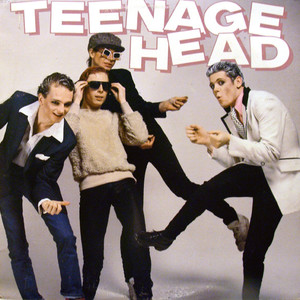
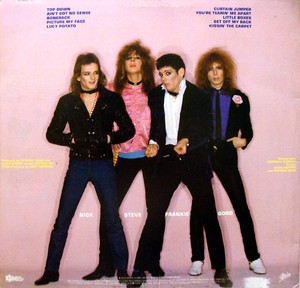
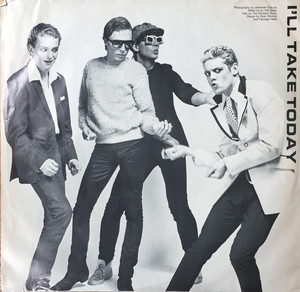
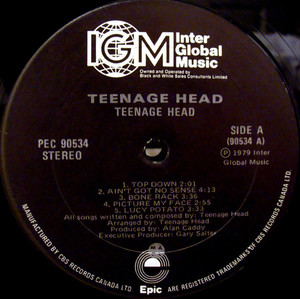
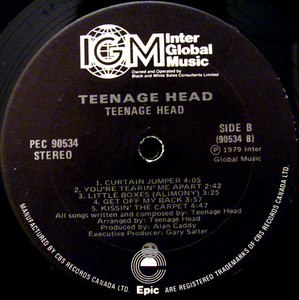
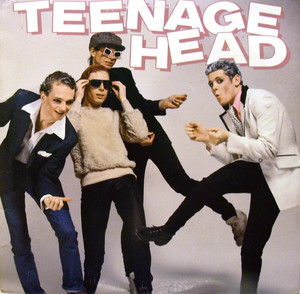
No Comments